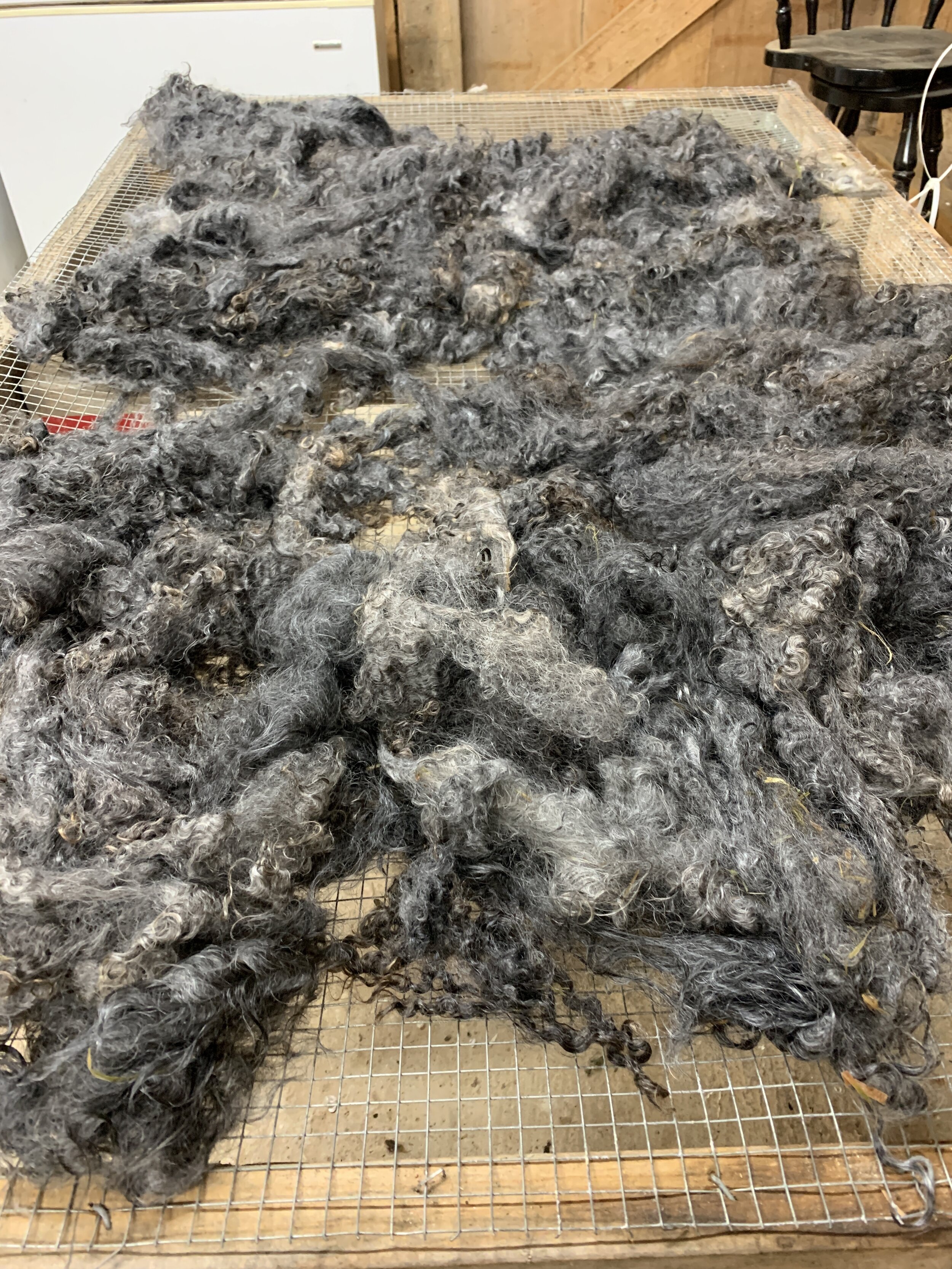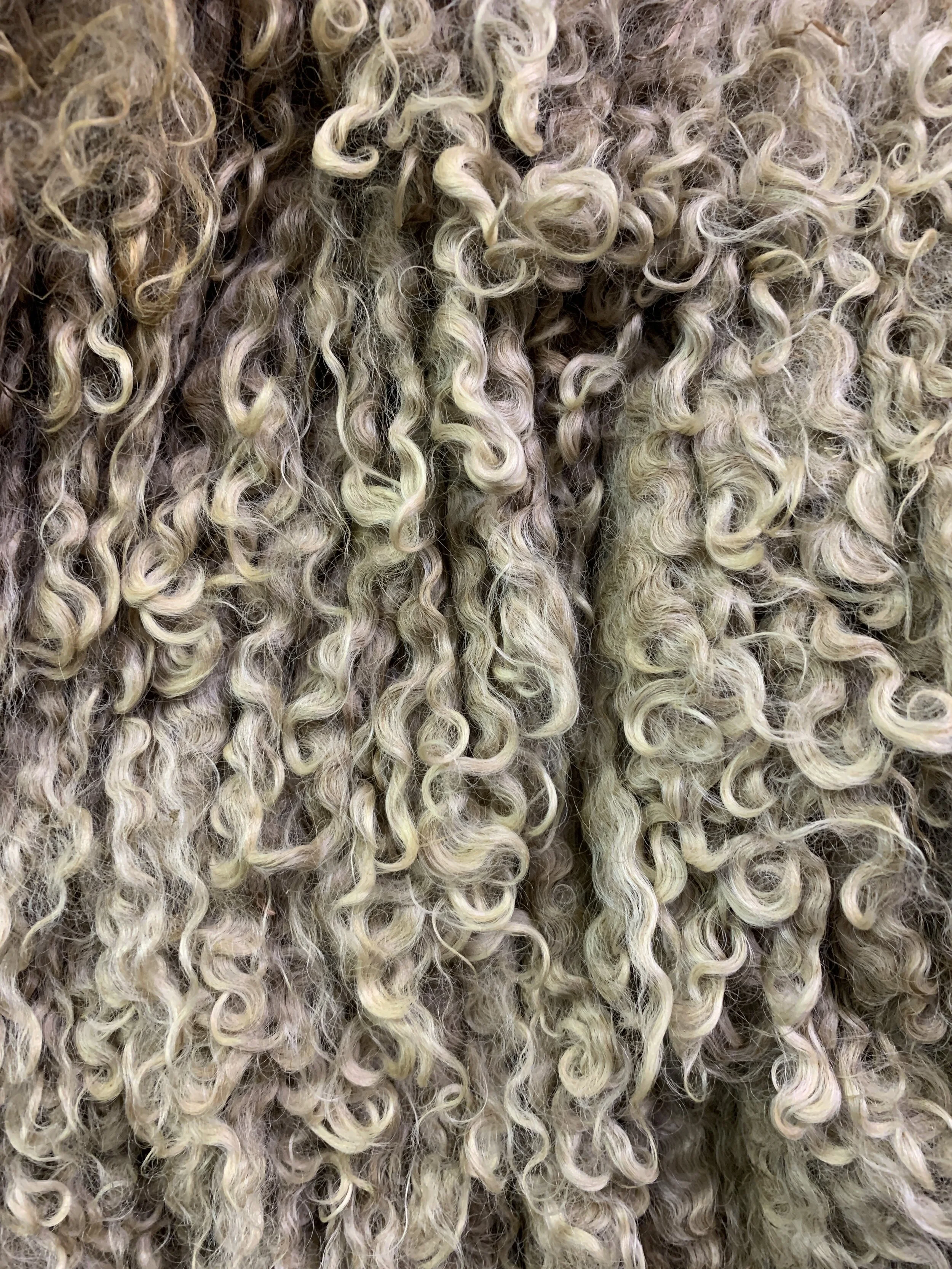Shearing Angora Goats
Spring and fall are the best times for shearing angora goats. They produce about 4-6 inches every six months which requires two shearings. Since I shear myself, I can decide when to do it. I usually look for at least 4 inches because the fiber will shrink a little in the washing. I also keep an eye on the fleece itself. If it is long enough and it appears that it is starting to collect hay or the animal is starting to scratch, it is time.
Black fleeces are among the coarsest. When I downsized my herd a few years ago, I kept only one black doe - Ebony. She had a gorgeous silky fleece and a very docile temperament. She had a kid buck a few months ago, Duo. I am hoping that his fleece will also be gorgeous. Ebony was bred to a “red” buck. Her fleece is now varying shades of charcoal and is still very silky at the age of three.
The “red” (brown) doe featured here is two years old. Her fleece is lovely. She is a very quiet doe and her fleece was super easy to shear. No felting and very defined ringlets. Her fleece will go in the wash tomorrow. It is very hard to tell how fine the mohair is until it is washed. The grease (versus sheep lanolin) is very thick to protect the fiber, so a true test of the fineness cannot really be determined until it is washed. She has been in with our white buck, but I am pretty sure that she has not been bred.
I have four white goats that I will shear next week. Their fleeces are super dense, so they will take longer. They are also a lot more fidgety.
I have learned to make sure that I have enough time to get each sheared so I do not get stressed. I am happy that no one has been nicked during the process in the past year. It is time consuming, but the resulting fleeces are very rewarding!




